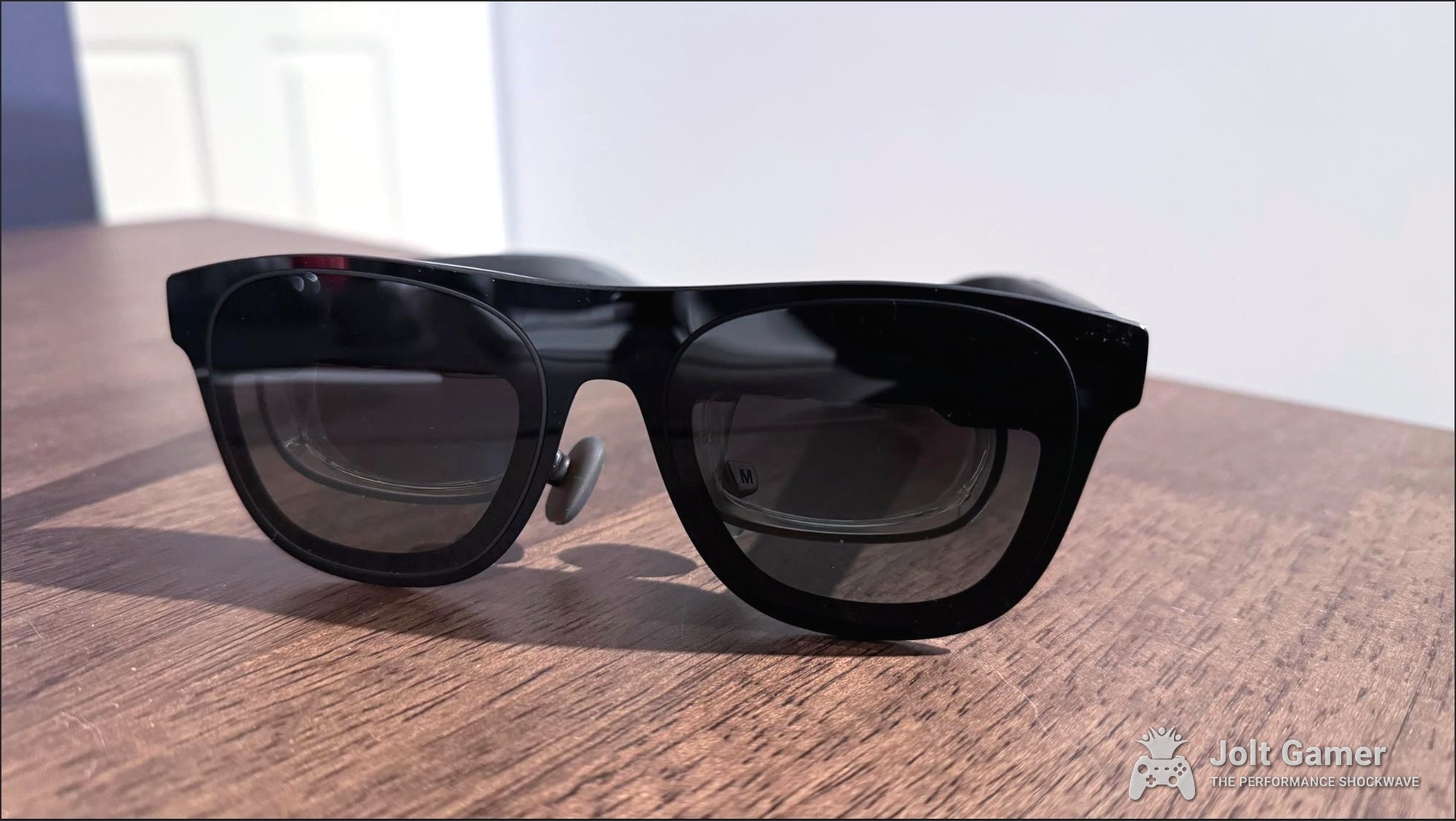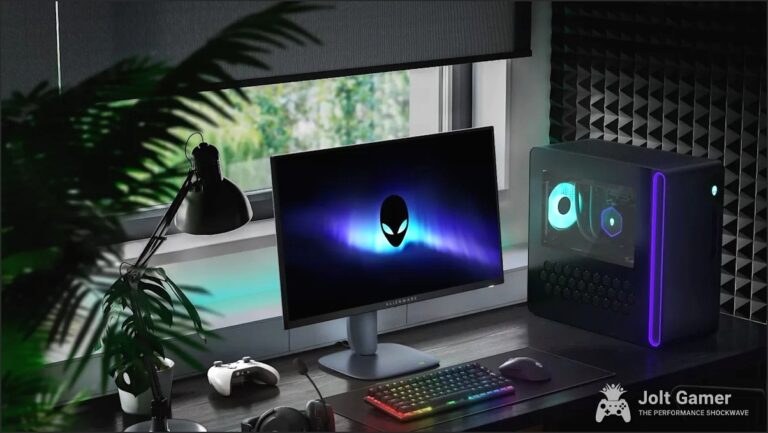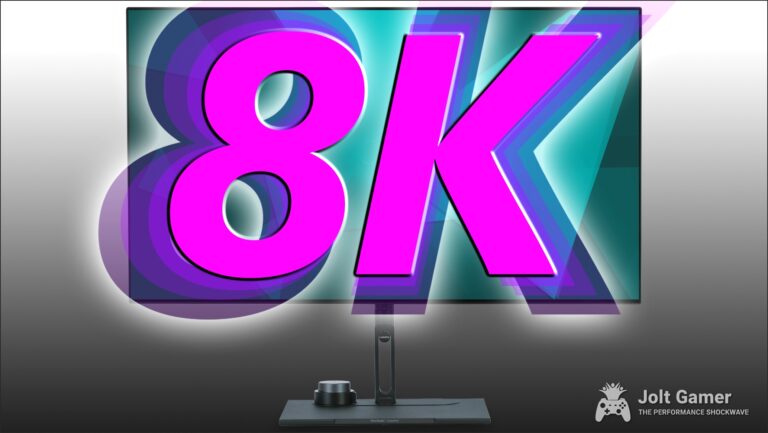The Dawn of Spatial Gaming: XREAL’s Ambitious Vision
XREAL, a name synonymous with pioneering augmented reality (AR) glasses, isn’t merely observing the future of spatial computing—it’s actively architecting it. With a commanding track record of global market leadership since 2021 and exceeding half-a-million shipments, XREAL consistently pushes the boundaries of what wearable displays can achieve. Their latest innovations, the XREAL One Series AR glasses and the powerful Beam Pro spatial computing device, are poised to fundamentally transform how gamers and tech enthusiasts interact with their digital worlds. This definitive JoltGamer guide will delve deep into these groundbreaking products, illuminate XREAL’s expansive, strategically built ecosystem, thoughtfully address critical user concerns, and chart the exciting, yet complex, trajectory of AR in gaming.
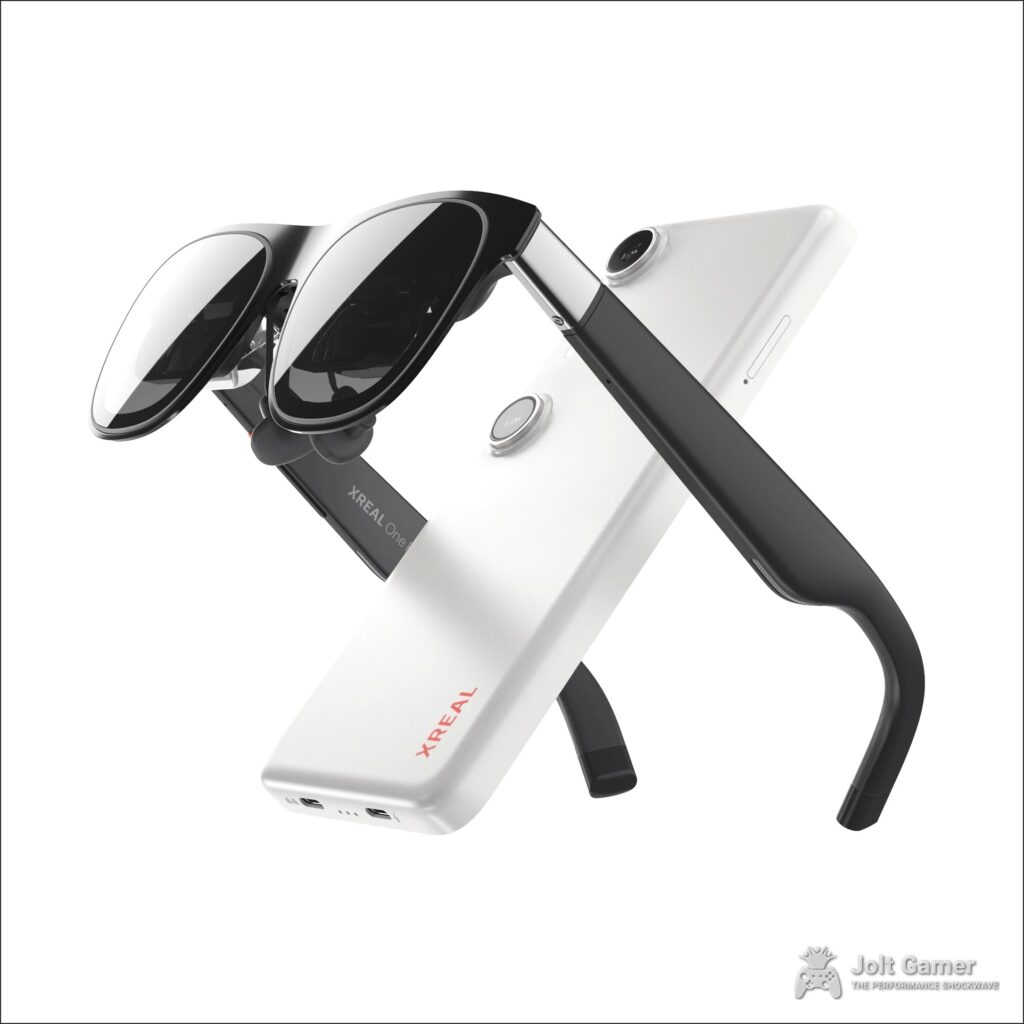
Key Takeaways: XREAL’s AR Revolution
- XREAL One Series & Beam Pro Lead the Charge: The new XREAL One and One Pro AR glasses feature the proprietary X1 spatial computing co-processor, delivering an industry-leading 3ms motion-to-photon (M2P) latency at 120Hz and enhanced displays with up to a 57-degree Field of View (FoV) and 700 nits brightness. Complementing this, the Beam Pro acts as a dedicated spatial computing hub, equipped with 3D cameras and running Android 14, thereby simplifying compatibility and unlocking full spatial experiences for a broader audience.
- Redefining Portable Gaming: XREAL AR glasses are strategically positioned as powerful, portable display solutions for PC gaming (e.g., Steam Deck, gaming laptops) and media consumption, offering an unparalleled massive virtual screen experience that travels with you, wherever you go.
- Strategic Ecosystem Expansion: XREAL is meticulously building a robust AR ecosystem through pivotal collaborations with industry titans such as Google (on ‘Project Aura’ and Android XR), Qualcomm (for Snapdragon processors powering devices like the Beam Pro), and Bose (for custom-tuned audio). This is further bolstered by new distribution agreements, including a significant partnership with AT&T.
- User-Centric Design & Eye Health: Prioritizing comfort and user well-being, XREAL glasses boast comprehensive TÜV Rheinland certifications for Low Blue Light, Flicker-Free, and Eye Comfort. Coupled with flexible prescription lens options and adjustable ergonomics, these features ensure a premium, accessible, and safe viewing experience.
- Navigating the Future’s Complexities: While the utility of AR sparks immense excitement, the community rightly voices concerns regarding social acceptance and data privacy. XREAL proactively addresses these through thoughtful design choices, such as the modular XREAL Eye camera, and by actively participating in industry dialogue to shape ethical AR development.
- Market Dominance & Future Vision: XREAL maintains its global leadership in the consumer AR/XR space, underpinned by a clear strategic focus on perfecting AR glasses and significant investments in core technologies like chips and optics. This long-term vision aims to drive the industry towards a ‘million-unit hit’ and beyond, anticipating a future deeply integrated with AI.
The Core Innovation: XREAL One Series & Beam Pro
XREAL One & One Pro: A Closer Look
Building on the resounding success of the Air 2, XREAL has officially unveiled its ambitious new One Series, comprising the XREAL One and XREAL One Pro. These glasses represent a significant leap forward in wearable display technology, fundamentally powered by XREAL’s in-house developed X1 spatial computing co-processor. This proprietary chip isn’t just a technical detail; it’s a game-changer, enabling remarkably smooth playback and boasting an ultra-low motion-to-photon (M2P) latency of just 3ms at 120Hz. To put that into perspective, this figure significantly outpaces typical industry measurements of 20ms and even premium competitors like the Apple Vision Pro’s 12ms, a critical factor for responsive gaming and immersive content. Both models feature dual 1080p OLED displays, delivering a combined 3840 x 1080 resolution for a stunning 32:9 aspect ratio, ideal for truly immersive content viewing.
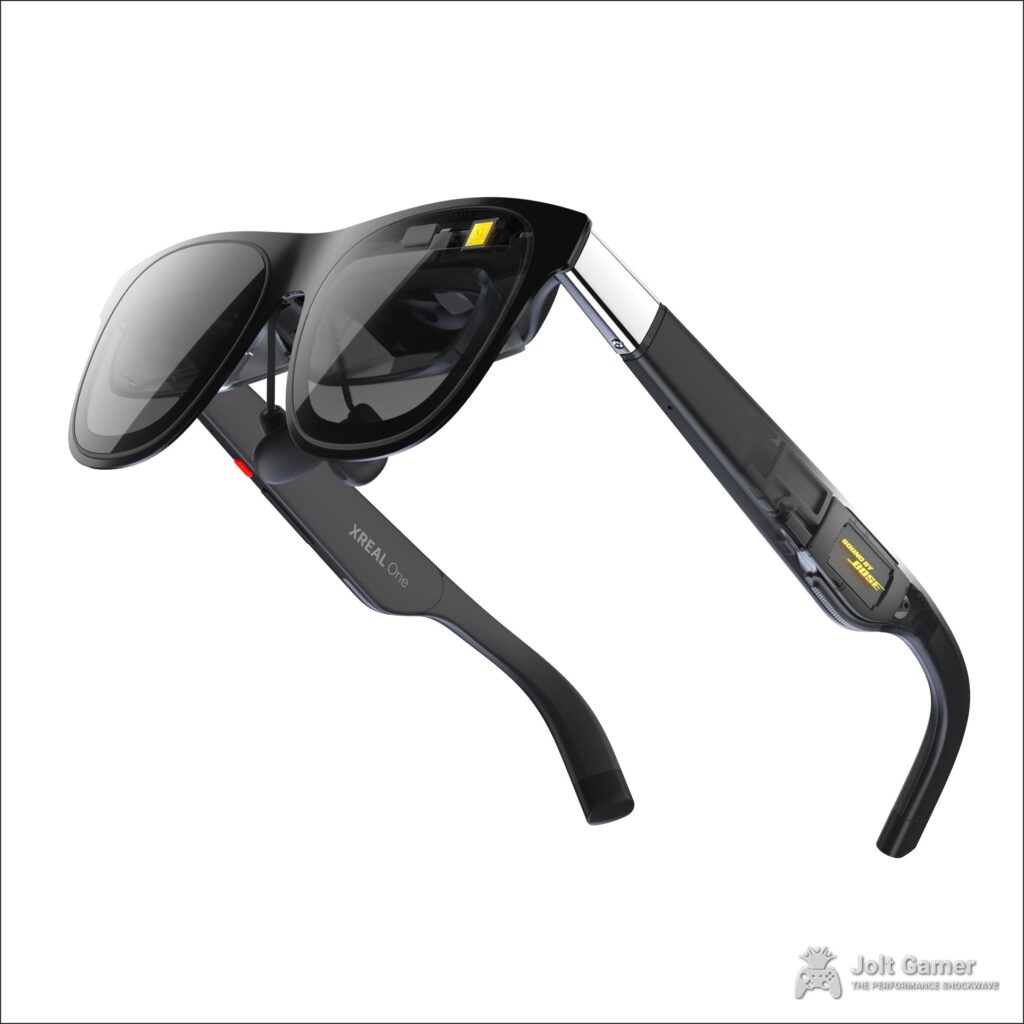
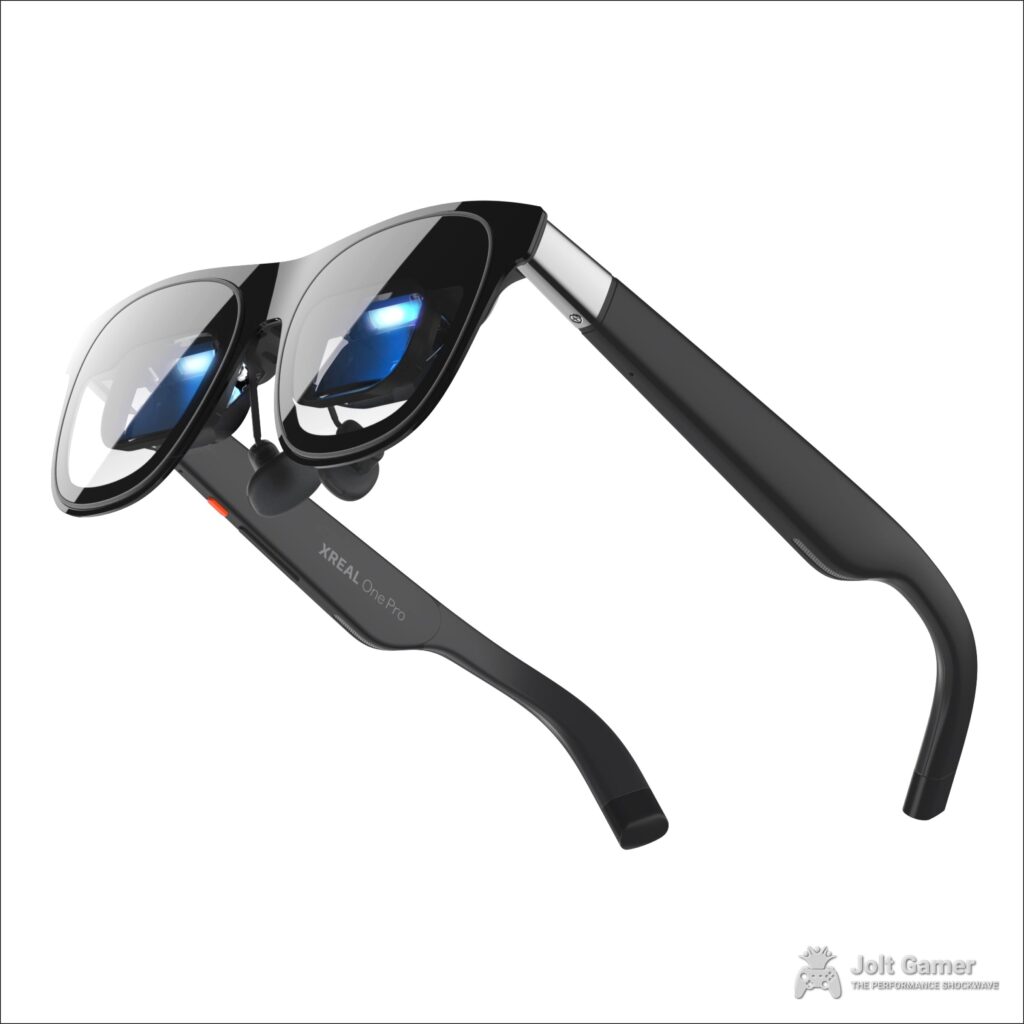
XREAL One Series vs. Air 2 Pro: Key Specifications
| Display Type | Dual Micro-OLED |
| Resolution (per eye) | 1920 x 1080 |
| Total Resolution | 3840 x 1080 (32:9) |
| Field of View (FoV) |
|
| Brightness |
|
| Refresh Rate | Up to 120Hz |
| Motion-to-Photon (M2P) Latency |
|
| Weight |
|
| IPD Adjustment |
|
| Electrochromic Dimming |
|
| Audio | Customized Sound by Bose (dual open-air speakers) |
| Cameras |
|
| Tracking | 3 Degrees of Freedom (DoF) |
| Connectivity | USB-C |
XREAL One Series: Pros and Cons for Gamers
Pros
- Proprietary X1 Chip: Unrivaled Responsiveness. The in-house X1 spatial computing co-processor delivers an industry-leading 3ms M2P latency at 120Hz, an absolute game-changer for competitive and immersive gaming where every millisecond counts.
- Expansive Field of View: More Immersion. With up to 57 degrees on the XREAL One Pro, the virtual screen feels significantly larger and more immersive than previous models, pulling you deeper into your games and media.
- Brilliant Displays & Smart Dimming: Up to 700 nits brightness on the One Pro, coupled with automatic electrochromic dimming, ensures optimal viewing clarity and contrast in diverse lighting conditions, from a dimly lit room to a bright outdoor setting.
- Bose-Tuned Spatial Audio: Customized open-air speakers, expertly tuned by Bose, provide superior sound quality and a natural soundscape, elevating both gaming audio and multimedia consumption.
- Integrated Camera & Microphones: The front-facing 12MP camera and four microphones are not just for communication; they lay the groundwork for exciting future AR applications and seamless spatial interaction within gaming environments.
- Robust & Refined Build Quality: A magnesium alloy front shell and a thoughtfully redesigned structure contribute to enhanced durability and comfort, crucial for extended gaming sessions.
Cons
- Marginally Heavier: At 84g (One) and 87g (One Pro), these models are slightly heavier than the featherlight 72g Air 2. While still exceptionally light for AR glasses, it’s a minor increase to note.
- 3DoF Tracking Limitations: While perfectly adequate for most portable display and spatial app use cases, the 3 Degrees of Freedom (3DoF) tracking means they lack the full spatial awareness and advanced AR experiences offered by 6DoF devices like the Air 2 Ultra.
- Premium Investment: With price points starting at $499 (One) and $599 (One Pro), these represent a premium investment, especially when considering bundles with the Beam Pro. However, the technology justifies the cost for early adopters.
Beam Pro: The Spatial Computing Hub
The XREAL Beam Pro transcends the definition of a mere accessory; it is a purpose-built spatial computing unit meticulously engineered to unlock the full potential of XREAL AR glasses. As the next iteration of the popular Beam — a device adopted by 70% of original XREAL headset users — the Beam Pro directly addresses common limitations. It provides a dedicated, powerful hub for AR, spatial, and 3D multimedia content, eliminating the need to constantly tether glasses to a smartphone, which often drains device battery. Equipped with dual 50-megapixel 3D cameras and running a customized Android 14 with a familiar smartphone-esque UI, the Beam Pro grants full access to the Google Play Store, ingeniously transforming millions of existing 2D Android apps into immersive spatial experiences. This device not only simplifies compatibility across a wide range of source devices but also significantly enhances battery life for your glasses and provides a streamlined user interface, making XREAL’s AR ecosystem truly plug-and-play.
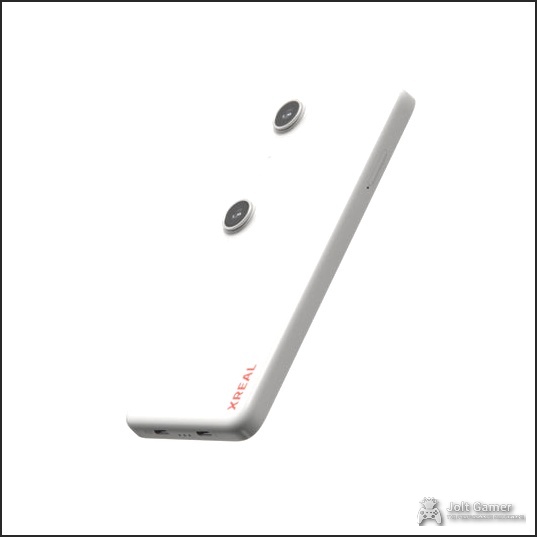
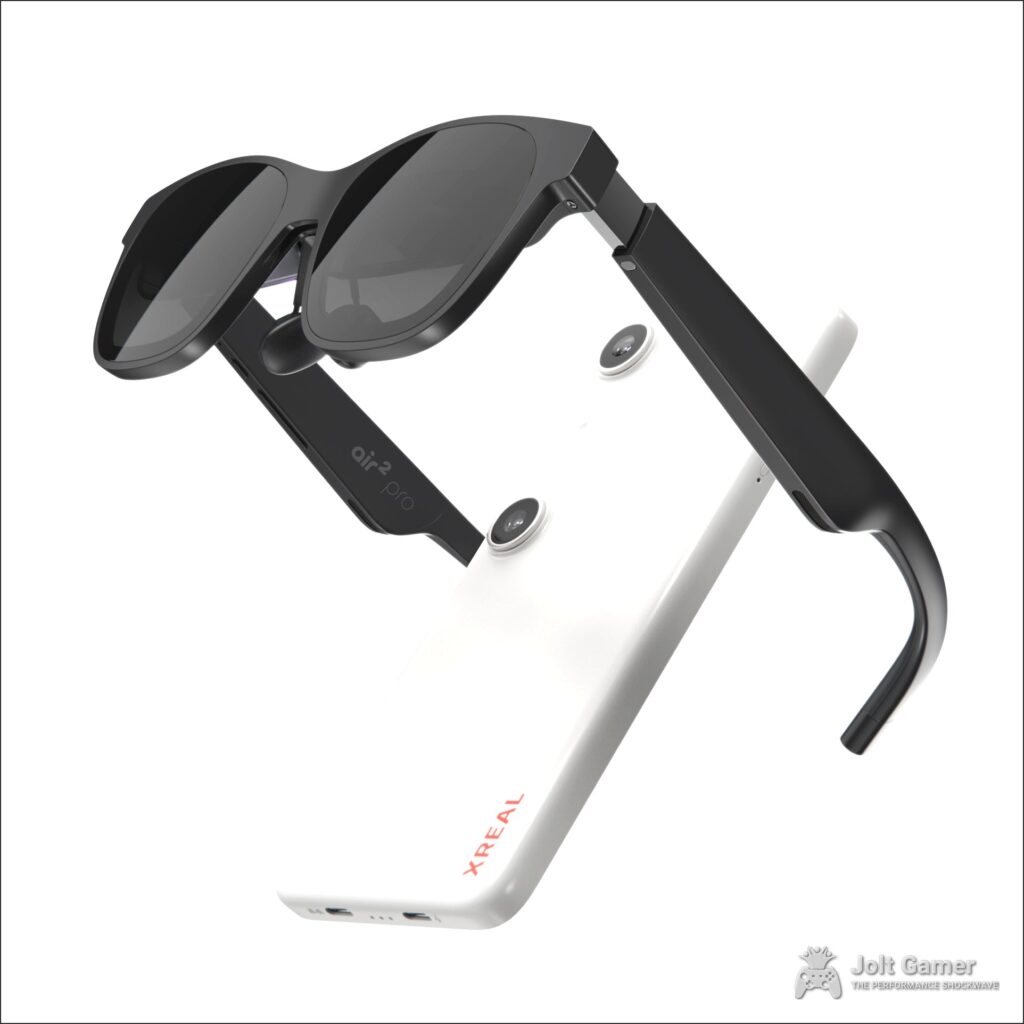
XREAL Beam Pro: Technical Specifications
| Processor | Qualcomm Snapdragon 6 Generation 1 (8-core spatial companion processor) |
| Operating System | Android 14 with NebulaOS (custom spatial UI) |
| Display | 6.5-inch 1080×2400 LCD, 60Hz refresh rate |
| Rear Cameras | Dual 50-megapixel 3D cameras (1080p 60FPS video, 12M Stereo photos, EIS, wide-angle correction) |
| Front Camera | 8-megapixel |
| RAM | 6GB or 8GB |
| Storage | 128GB or 256GB (expandable up to 1TB via MicroSD) |
| Connectivity | Wi-Fi 6, Bluetooth 5.2, 5G (on select models), 2x USB-C ports (charging + glasses) |
| Battery | 4300mAh (27W fast charging) |
| Weight | 208 grams |
| Spatial Tracking | 3 Degrees of Freedom (DoF) for XREAL AR glasses |
| Key Features | Google Play access, multitasking (up to two apps), Body Anchor/Smooth Follow modes, IP54 water and dust resistance |
Beam Pro: Your Gateway to Spatial Android
The XREAL Beam Pro is far more than a mere companion; it’s a sophisticated, mobile spatial computing platform in its own right. When connected to your XREAL glasses, it seamlessly launches NebulaOS, XREAL’s custom spatial operating system built upon Android 14. This intelligent integration grants full access to Google Play apps, adeptly transforming familiar 2D applications into truly immersive 3D spatial experiences. With robust multitasking capabilities — allowing up to two apps simultaneously — and intuitive touch controls via the Beam Pro’s vibrant screen, it serves as the essential gateway to truly mobile, spatial augmented reality. This is where your digital world gains new dimensions.
Gaming Redefined: How XREAL AR Glasses Transform Your Play
For the JoltGamer community, the most exhilarating promise of AR glasses lies squarely in their capacity to redefine portable gaming and media consumption. XREAL’s AR glasses, particularly the advanced new One Series, function as incredibly versatile, massive virtual displays that defy the limitations of physical screens. Imagine effortlessly hooking up your Steam Deck, gaming laptop, or even your smartphone via a single USB-C cable to a pair of lightweight glasses, and instantly being presented with a virtual screen up to 330 inches in size, wherever your adventures take you. This isn’t merely screen mirroring; it heralds a new paradigm of immersive, private, and flexible digital engagement. Whether you’re conquering AAA titles on a cross-country flight, enjoying a cinema-sized movie during your commute, or even leveraging multiple virtual monitors for unparalleled productivity on the go, XREAL’s technology makes this a seamless reality. The ultra-low latency of the One Series, combined with the spatial capabilities unlocked by the Beam Pro, opens tantalizing possibilities for gaming interfaces that blend seamlessly with the real world — offering a compelling glimpse into the ‘IRL video game HUD’ that gamers have long envisioned.
Key Gaming Applications with XREAL AR Glasses
- Massive Portable Display: Transform your Steam Deck, gaming laptop, or smartphone into a colossal virtual screen up to 330 inches, providing an unparalleled and private mobile gaming experience whether you’re at home or on the move.
- Multi-Screen Spatial Productivity: Leverage the Beam Pro’s NebulaOS to arrange and interact with multiple virtual 2D Android applications within a spatial canvas, dramatically enhancing your on-the-go productivity and multitasking capabilities.
- Immersive Media Consumption: Dive into movies, streaming services, and other digital content on a cinema-sized virtual screen, further enhanced by the bespoke Bose-tuned spatial audio that envelops you in sound.
- The Genesis of Spatial Gaming: With the One Series’ ultra-low latency and integrated cameras, the potential for truly augmented reality games — overlaying digital elements onto your physical environment — is immense, promising a revolutionary, blended reality gaming experience.
The Power of Collaboration: Google, Qualcomm, Bose, and Beyond
XREAL’s commanding market dominance isn’t solely built upon its groundbreaking proprietary hardware; it is significantly bolstered by a robust and expanding network of strategic collaborations with world-renowned industry leaders. These partnerships are absolutely critical to expanding the broader AR ecosystem, ensuring seamless integration of hardware, software, services, and experiences across a multitude of industries, with gaming being a prime beneficiary. Perhaps the most significant of these is the deep strategic partnership with Google on ‘Project Aura,’ where XREAL is co-developing the next generation of AR glasses designed to run Google’s new Android XR operating system. This pivotal collaboration strategically positions XREAL at the forefront of Google’s global XR platform strategy, integrating lightweight design, an ultra-wide field of view, and the formidable power of Google’s Gemini AI.
Key XREAL Partnerships & Their Impact
- Google & Android XR (Project Aura): XREAL stands as the sole Chinese company collaborating directly with Google on its next-generation AR glasses and the foundational Android XR operating system. This landmark partnership will integrate Google’s powerful Gemini AI, with consumer availability anticipated by late this year or early next, marking a significant leap for the AR platform.
- Qualcomm Technologies: The XREAL Beam Pro is expertly powered by a Qualcomm Snapdragon 6 Generation 1 spatial companion processor, ensuring not only high performance and reliability but also robust AI capabilities crucial for advanced spatial AR experiences.
- Bose: The XREAL One Series glasses proudly feature customized ‘Sound by Bose,’ a meticulously fine-tuned audio system that delivers optimal audio quality, superior mid-to-high frequencies, and a rich, natural soundscape, profoundly enhancing all listening experiences.
- AT&T: A pivotal new distributor relationship with AT&T will bring the XREAL One Series glasses directly to US customers via newtech.att.com, significantly expanding XREAL’s online retail presence and accessibility.
- BMW Group: XREAL is set to demo cutting-edge 3D entertainment for passengers and showcase its AR technology with BMW’s M Mixed Reality race at CES, building upon previous successful driver and co-driver augmented experiences.
- T-Mobile & Mawari: Collaborating to demonstrate realistic, immersive 3D call experiences at CES, this partnership leverages T-Mobile’s ultra-fast 5G network — essential for low-latency mobile AR — and Mawari’s real-time immersive content streaming technology for lifelike digital interactions.
- XR Sports Alliance (XRSA): XREAL’s membership as a first cohort partner in the XRSA underscores its commitment to collectively establishing new standards for immersive AR scenarios, particularly within the burgeoning sports and entertainment sectors.
Evolution of XREAL: From Light to Aura
XREAL’s journey in augmented reality began with a singular, compelling vision: to establish mixed reality (MR) glasses as the undeniable future of mobile technology. Founded by engineer Chi Xu, the company, formerly known as Nreal, has consistently pioneered consumer-focused AR. From the foundational XREAL Light Developer Kits to the highly refined and user-friendly Air series, and now the advanced One Series, XREAL has relentlessly innovated in optical technologies and user-centric design. This evolution has seen a deliberate and successful shift towards lighter, more fashionable, and inherently comfortable form factors, while simultaneously integrating increasingly powerful computing and sophisticated spatial capabilities. This iterative, experience-driven approach has not only cemented XREAL’s position as a market leader but also ensured that each generation builds upon the last, delivering an ever more seamless and deeply immersive AR experience.
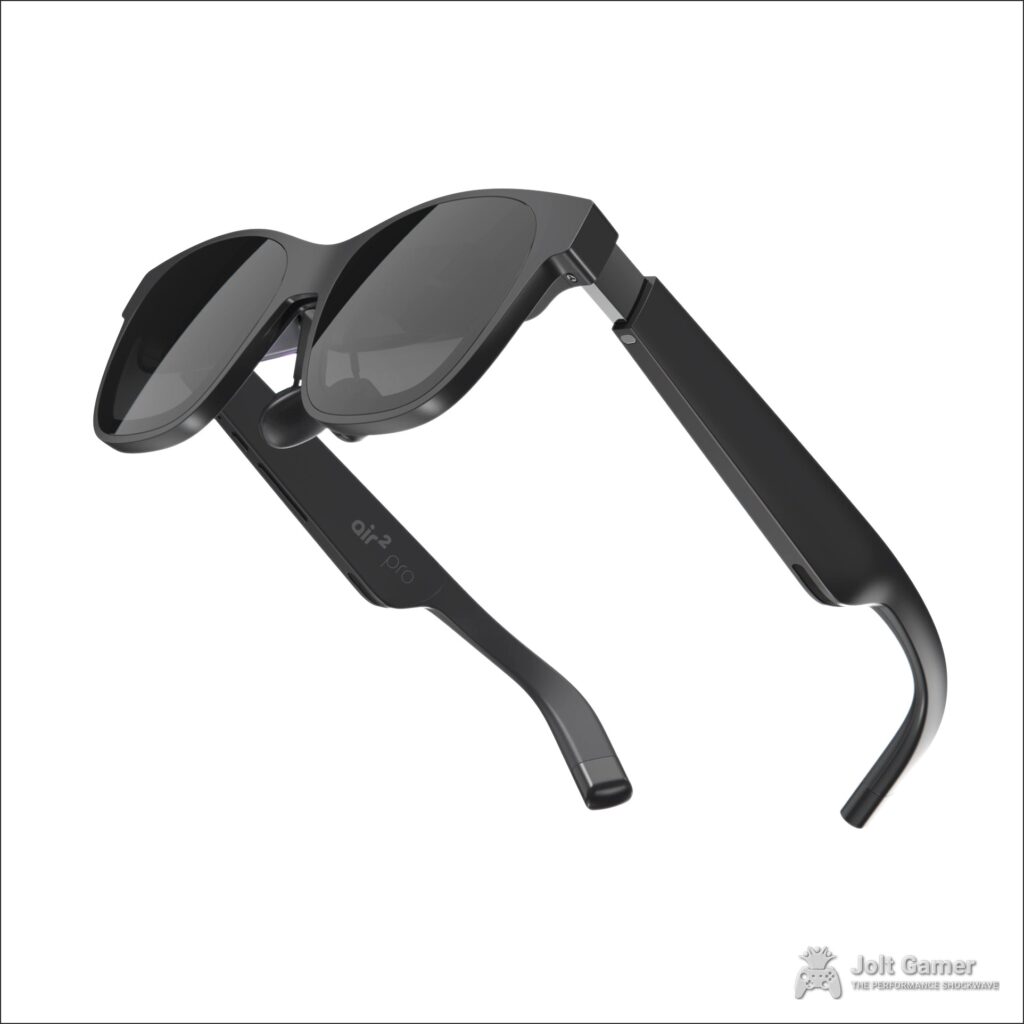
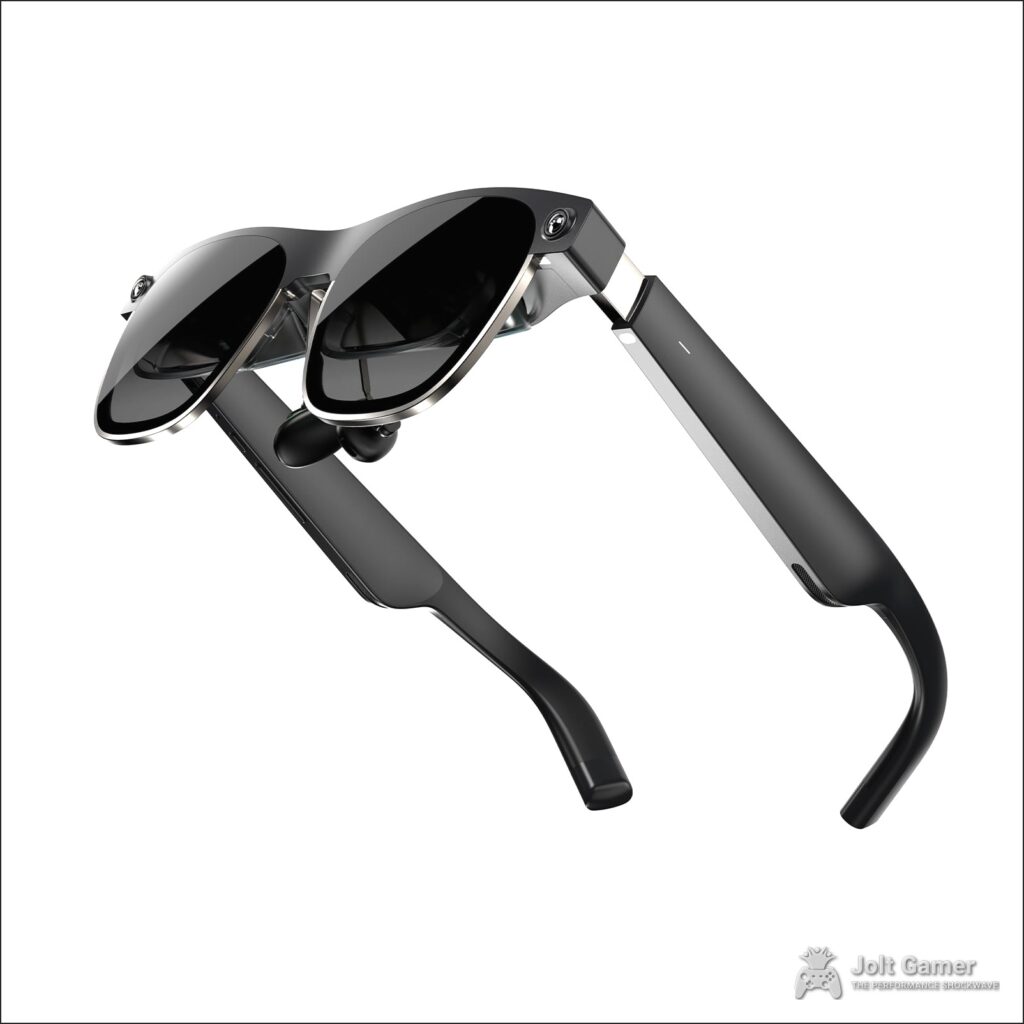
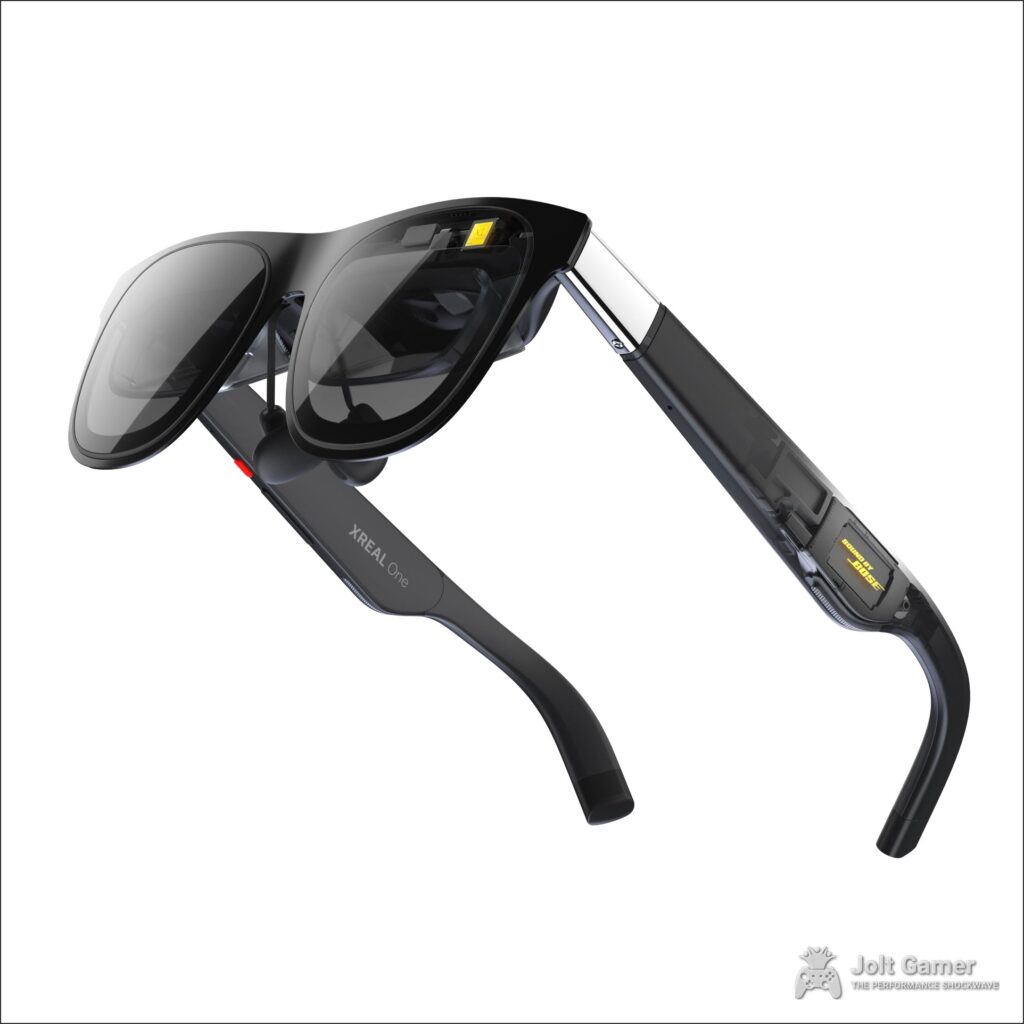
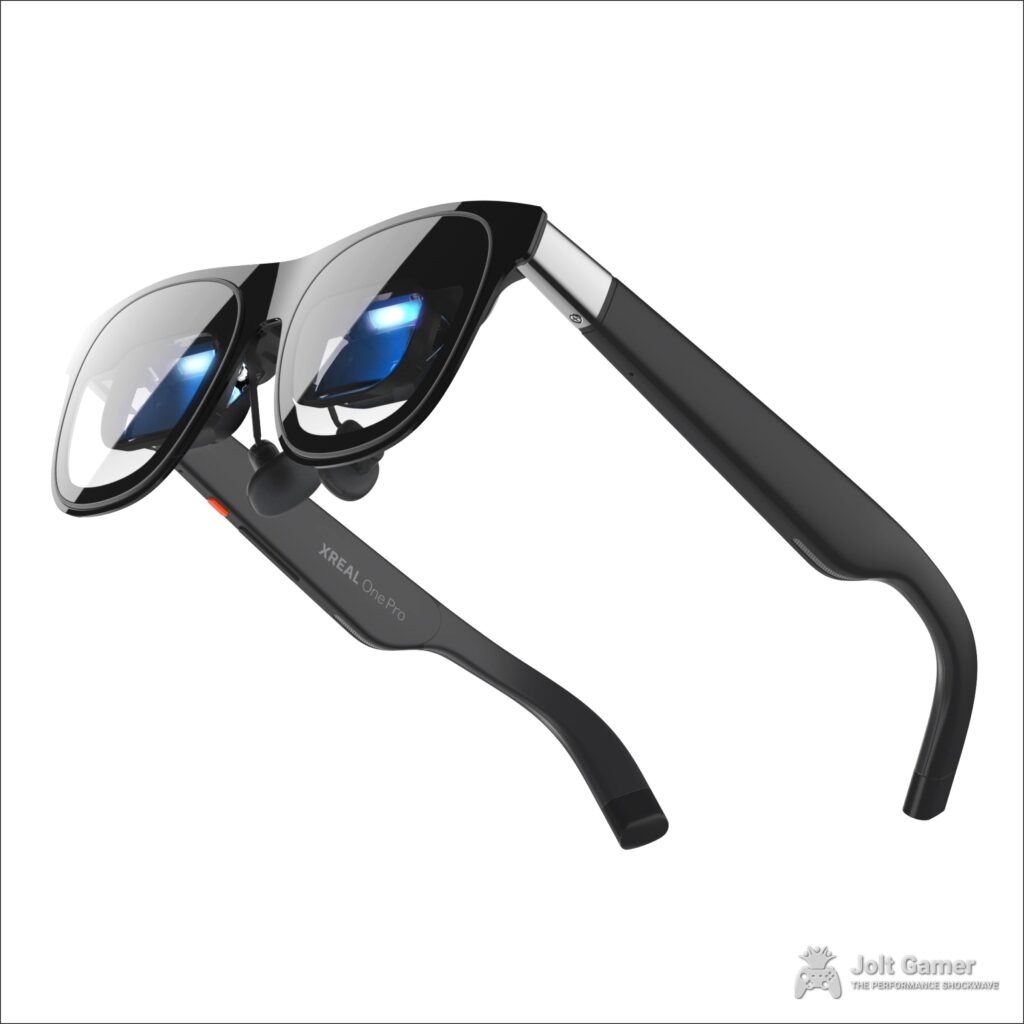
XREAL AR Glasses Lineup: A Comprehensive Comparison
| Feature | XREAL Light (Discontinued) | XREAL Air/Air 2/Air 2 Pro | XREAL Air 2 Ultra | XREAL One | XREAL One Pro |
|---|---|---|---|---|---|
| Resolution (per eye) | 1920×1080 | 1920×1080 | 1920×1080 | 1920×1080 | 1920×1080 |
| Field of View (FoV) | 52 degrees | 46 degrees | 52 degrees | 50 degrees | 57 degrees |
| Refresh Rate | 60Hz | 60/72/90/120Hz | 60/72/90/120Hz | 60/72/90/120Hz | 60/72/90/120Hz |
| Weight | 106g | 77g (Air), 72g (Air 2), 75g (Air 2 Pro) | 80g | 84g | 87g |
| Cameras | RGB + Grayscale | None | Grayscale (for 6DoF) | Front-facing 12MP (detachable RGB accessories) | Front-facing 12MP (detachable RGB accessories) |
| Tracking | 6DoF | 3DoF (with Beam/Beam Pro) | 6DoF | 3DoF | 3DoF |
| Proprietary Chip | None | None | None | X1 Spatial Computing Co-processor | X1 Spatial Computing Co-processor |
| Electrochromic Lens | None | Air 2 Pro only | None | Automatic Dimming | Automatic Dimming |
Project Aura and the AI Future
Beyond its impressive current product lineup, XREAL is deeply invested in meticulously shaping the next generation of augmented reality through ‘Project Aura,’ a groundbreaking collaboration with Google. This ambitious project aims to integrate an ultra-lightweight design, an expansive ultra-wide field of view, and a cinema-level immersive experience, all powered by Google’s formidable Gemini AI and running on the new Android XR operating system. XREAL’s CEO, Chi Xu, rightly views this as a ‘milestone’ event, strategically positioning XREAL to launch an AR glass with advanced AI functionality in partnership with Google as early as next year. Furthermore, XREAL has proactively launched ‘XREAL Eye,’ an external, AI-dedicated camera module. This modular design addresses critical user preferences, allowing individuals to unlock stronger AI capabilities while offering the choice not to have always-on cameras. This strategic focus on in-house chip R&D and optical breakthroughs, combined with thoughtful AI integration, underscores XREAL’s unwavering commitment to creating a ‘super platform’ that expertly balances unparalleled comfort with a rich, dynamic content experience. This holistic approach is deliberately setting the stage for the true ‘iPhone moment’ for AR glasses, which XREAL anticipates around 2027.
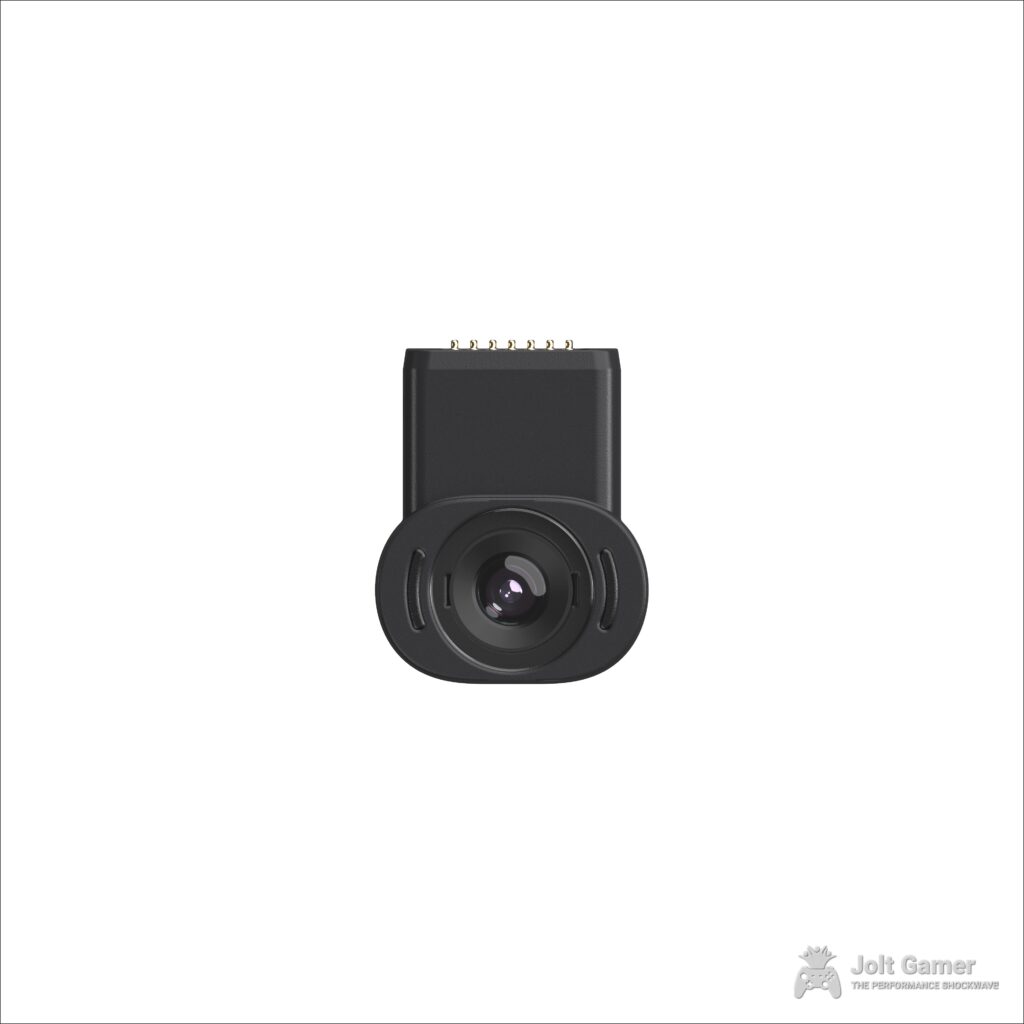
Navigating the Future: User Experience, Privacy, and Social Acceptance
While the technological advancements embedded within XREAL’s AR glasses are undeniably exciting, the broader conversation surrounding wearable tech inevitably grapples with complex human elements: the nuances of user experience, the hurdles of social acceptance, and, critically, the paramount issue of privacy. The JoltGamer community, much like the wider tech-savvy public, expresses a dual sentiment: immense enthusiasm for the potential of AR glasses to revolutionize gaming interfaces and portable display solutions, tempered by significant apprehension regarding their societal perception and the profound implications for personal data privacy.
As if being on your phone 24/7 isn’t bad enough, Imagine walking into a cafe filled with people staring off into the distance like brain dead zombies while they move their hands in hauntingly small circles. You tell me, who’s truly in control here?
The technology would be so much cooler if it wasn’t a data collection surveillance system for Meta…. Bummer. I really wish you covered more of the security/data collection aspects of technology like this as it’s a very important part of buying tech like this.
The Human Factor: Pros and Cons of AR Glasses Adoption
Pros
- Enhanced Immersion & Productivity: The ability to seamlessly blend digital content with the real world offers unprecedented levels of immersion for gaming and entertainment, alongside significant boosts in on-the-go productivity.
- Unprecedented Portability: Carrying a massive virtual display — up to 330 inches — within a lightweight, stylish glasses form factor unlocks entirely new mobile experiences, from gaming anywhere to working remotely with multiple screens.
- Innovative Interactions: The potential for novel forms of interaction through spatial computing, intuitive gestures, and advanced AI integration promises a future where technology responds to us more naturally and intelligently.
- Improved Accessibility & Comfort: Features like flexible prescription lens support, adjustable ergonomics, and a wide head size compatibility make AR technology accessible and comfortable for a diverse and broad user base.
Cons
- Social Stigma & Acceptance: The perception of users ‘staring off into the distance like brain dead zombies’ highlights the significant challenge of integrating AR glasses gracefully into everyday social norms and public spaces.
- Privacy & Data Collection Risks: The presence of always-on cameras and sophisticated sensors in some AR wearables raises paramount concerns about surveillance, personal data security, and the potential for unauthorized recording.
- Cognitive Load & Distraction: Actively managing and processing virtual overlays within a dynamic real-world environment can be mentally demanding and potentially distracting, impacting situational awareness and focus.
- Ethical Concerns & Misuse: The potential for misuse, such as recording individuals without their explicit consent, necessitates the urgent development of robust ethical frameworks, clear usage guidelines, and heightened user awareness to prevent abuses.
XREAL is acutely aware of these societal and personal concerns, and has proactively prioritized user-centric design from the very outset. Their glasses, including the Air, Air 2, and Air 2 Pro models — and now the One Series — boast rigorous certifications from the TÜV Rheinland Group for Low Blue Light, Flicker-Free, Color Accuracy, and comprehensive Eye Comfort. This commitment ensures a high-quality, comfortable, and crucially, eye-friendly viewing experience even during extended sessions. Furthermore, XREAL offers incredibly flexible options for prescription lenses, either through trusted partners like Lensology and Rochester Optical or via a convenient in-package insert for fabrication at users’ preferred local optical stores. The adjustable temple arms, offering up to 40 degrees of articulation, and wide head size compatibility (ranging from 120 mm to 186 mm) further enhance ergonomic comfort and ensure a personalized fit for a diverse user base.
JoltGamer’s Take: Privacy in the AR Era
The privacy concerns surrounding always-on wearable technology are not just valid; they are paramount. While XREAL’s core AR glasses, particularly the Air and One series, primarily function as cutting-edge displays, the introduction of integrated cameras — such as on the One Series and the modular XREAL Eye — introduces new and vital considerations. It is absolutely crucial for users to understand precisely what data is being collected, how it is used, and to proactively leverage any available privacy controls. XREAL’s decision to offer the ‘XREAL Eye’ as a modular, AI-dedicated camera module is a thoughtful and commendable step. This approach empowers users to choose whether to enable advanced AI capabilities and their associated data collection, rather than forcing always-on cameras into every device. As consumers, our collective vigilance and unwavering demand for transparency will continue to be the driving force shaping the ethical and responsible development of this transformative technology.
The Bigger Picture: AR’s Industry Trajectory and XREAL’s Role
The augmented reality market is not merely growing; it is on the cusp of a seismic boom, projected to reach hundreds of billions of dollars. This exponential growth is driven by rapid advancements in hardware, software, connectivity, and burgeoning consumer demand for immersive digital experiences. XREAL, with its substantial investments in research and development, strategically forged partnerships, and aggressive market expansion, stands squarely at the forefront of this profound transformation. The convergence of emerging technologies — particularly powerful AI, ultra-fast 5G connectivity, and sophisticated advanced sensor technologies — will further enhance real-time data processing, elevate interactivity, and unleash entirely new applications across incredibly diverse sectors, ranging from gaming and entertainment to enterprise solutions and healthcare. XREAL’s discerning strategic focus on perfecting AR glasses, rather than prematurely rushing into unrefined ‘AI glasses,’ exemplifies a mature, long-term vision for the industry, emphasizing quality and user experience over hype.
Key Industry Trends Shaping AR’s Future
- AI Integration: The seamless integration of large AI models, suchs as Google’s Gemini and OpenAI’s ChatGPT, is fundamentally driving multimodal AI experiences within AR wearables, promising more intuitive and contextually aware interactions.
- 5G Connectivity: The advent of ultra-fast, low-latency 5G networks is proving critical for enabling truly seamless, mobile AR experiences and robust real-time content streaming, freeing users from tethered connections.
- Hardware Miniaturization & Efficiency: Continuous, relentless innovation in micro-LED/OLED displays, energy-efficient components, and advanced composites is yielding lighter, more powerful, and aesthetically pleasing AR glasses that are virtually indistinguishable from traditional eyewear.
- Robust Developer Ecosystems: The proliferation of robust platforms, complete with comprehensive SDKs and APIs, is actively fostering a diverse and vibrant range of AR applications across myriad industries, from gaming to professional tools.
- Ethical Frameworks & Governance: Active collaboration among policymakers, industry leaders, and consumers is establishing essential guidelines for data security, user privacy, and ethical usage, ensuring that AR’s transformative power is wielded responsibly.
XREAL’s Vision: A Future Where Gaming is Everywhere
XREAL is not merely selling advanced AR glasses; it is selling a compelling vision of spatial computing that promises to fundamentally reshape how we interact with digital content. With the formidable XREAL One Series, the versatile Beam Pro, and strategic, deep-rooted partnerships with industry giants like Google and Qualcomm, the company is unequivocally delivering on that promise with cutting-edge hardware and a rapidly expanding, intelligent ecosystem. For gamers, the prospect of carrying a massive, portable display — capable of transforming virtually any environment into a personal, immersive gaming arena — is incredibly compelling and truly revolutionary. While the inherent challenges surrounding social acceptance and paramount privacy concerns rightly persist, XREAL’s steadfast commitment to user-centric design, uncompromising eye health, and a thoughtful, modular approach to AI integration demonstrates a mature and responsible path forward. As the augmented reality industry rapidly matures, XREAL is strategically positioned not just to be a participant, but to be a key architect of a future where AR seamlessly blends with our daily lives, making gaming and all digital experiences more immersive, more accessible, and profoundly more personal than ever before. This isn’t just an upgrade to existing technology; it is a profound revolution in how we perceive and interact with our digital world.
Frequently Asked Questions About XREAL AR Glasses
What are the key differences between XREAL One, XREAL One Pro, and XREAL Air 2 Pro?
The XREAL One and One Pro are the newest models, featuring XREAL’s proprietary X1 spatial computing co-processor for ultra-low 3ms latency and higher brightness (600-700 nits). The One Pro offers the largest FoV at 57 degrees. The Air 2 Pro is a previous generation model with a 46-degree FoV, 500 nits brightness, and a unique electrochromic dimming feature with manual control (0%, 35%, 100%). All models offer 1080p per eye resolution.
What is the XREAL Beam Pro and why do I need it?
The XREAL Beam Pro is a dedicated spatial computing companion device. It’s essentially a handheld Android 14 device with dual 50MP 3D cameras and XREAL’s NebulaOS. It significantly enhances XREAL AR glasses by providing 3DoF spatial tracking, access to Google Play apps in a spatial environment, improved compatibility with various devices, and a dedicated platform for capturing and viewing 3D content. It simplifies the user experience, provides dedicated processing, and extends battery life for your glasses.
Can I use XREAL AR glasses for PC gaming?
Absolutely. XREAL AR glasses are excellent portable display solutions for PC gaming. You can connect them via USB-C to devices like the Steam Deck, gaming laptops, or even consoles (with an adapter) to project a massive virtual screen (up to 330 inches) directly in front of your eyes. The ultra-low latency of the One Series makes it particularly suitable for responsive gaming.
Are XREAL glasses comfortable and good for my eyes?
Yes, XREAL prioritizes comfort and eye health. Their Air series and One series glasses hold TÜV Rheinland certifications for Low Blue Light, Flicker-Free, Color Accuracy, and Eye Comfort. They feature adjustable temple arms, various nose pads, and are designed to accommodate a wide range of head sizes. Prescription lens inserts are also included, or you can order custom lenses from partners.
What about privacy concerns with AR glasses?
Privacy is a significant concern for any wearable tech with cameras. XREAL addresses this by offering the ‘XREAL Eye’ as a modular, external AI camera, allowing users to choose when to enable advanced AI capabilities and associated data collection. While the One Series has an integrated camera, XREAL’s primary focus remains on display utility. As with any smart device, users should be aware of data collection practices and utilize available privacy settings.
What is Project Aura and XREAL’s partnership with Google?
Project Aura is a deep strategic partnership between XREAL and Google to co-develop the next generation of AR glasses. These glasses will run Google’s new Android XR operating system and integrate Google’s Gemini AI. This collaboration is a significant milestone, aiming to create lightweight, immersive AR glasses with AI functionality, with consumer availability anticipated late this year or early next.
Where to Buy XREAL’s Latest AR Tech
XREAL One AR Glasses
Price: $499
Release Date: Expected December 2024 (Pre-order available)
Where to Buy: XREAL official shop, AT&T newtech.att.com
XREAL One Pro AR Glasses
Price: $599
Release Date: Expected Early 2025
Where to Buy: XREAL official shop, AT&T newtech.att.com
XREAL Beam Pro Spatial Computing Device
Price: $199 (128GB Wi-Fi), $249 (256GB Wi-Fi), $299 (256GB 5G)
Release Date: Available for Pre-order (Bundles with glasses also available)
Where to Buy: XREAL official shop, Amazon
This comprehensive guide was meticulously crafted from 19 distinct intelligence briefs, encompassing detailed product specifications, market analysis, partnership announcements, and community sentiment, ensuring a holistic and authoritative perspective on XREAL’s AR innovations.

